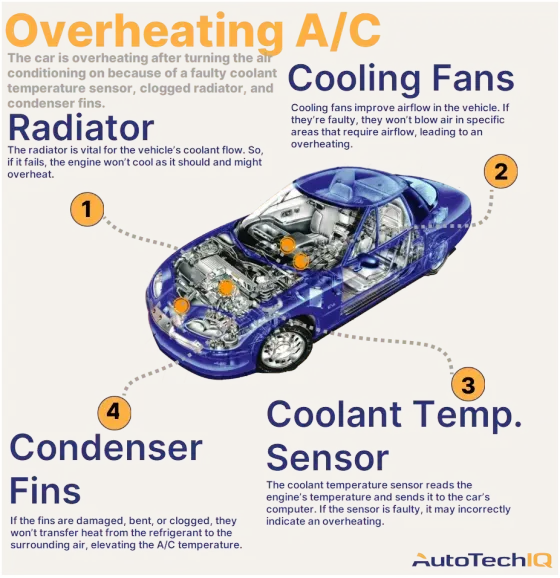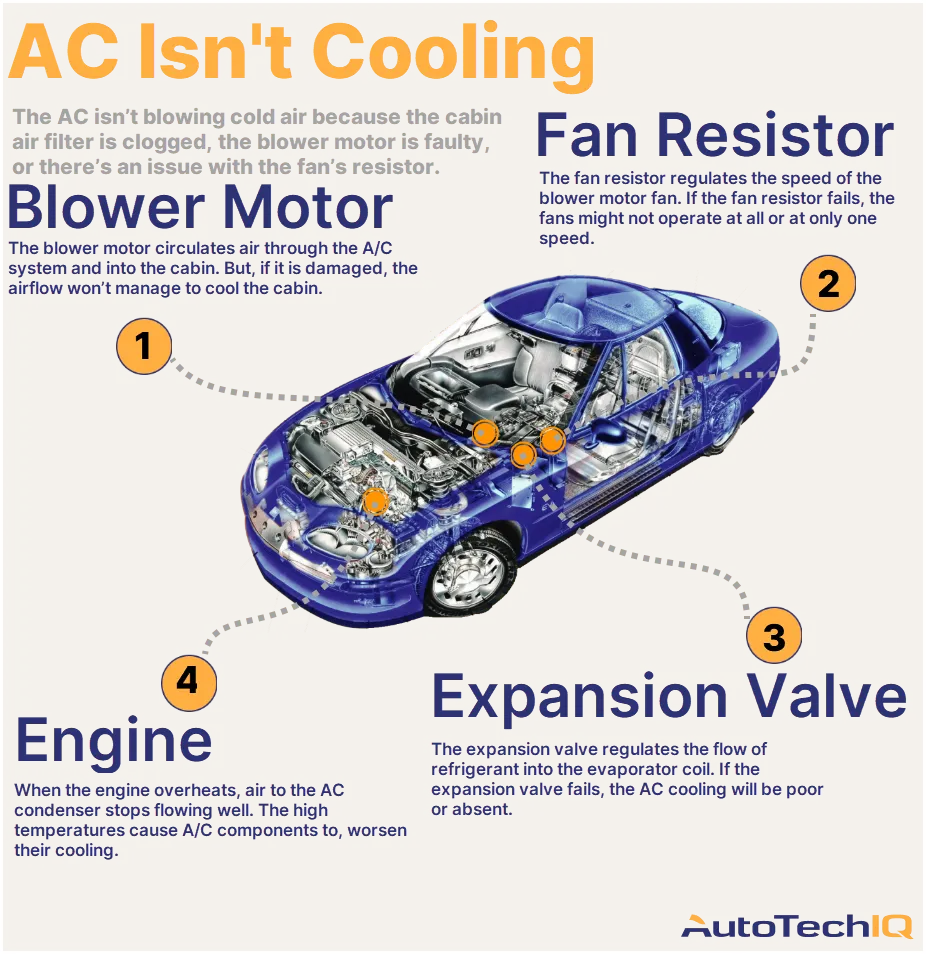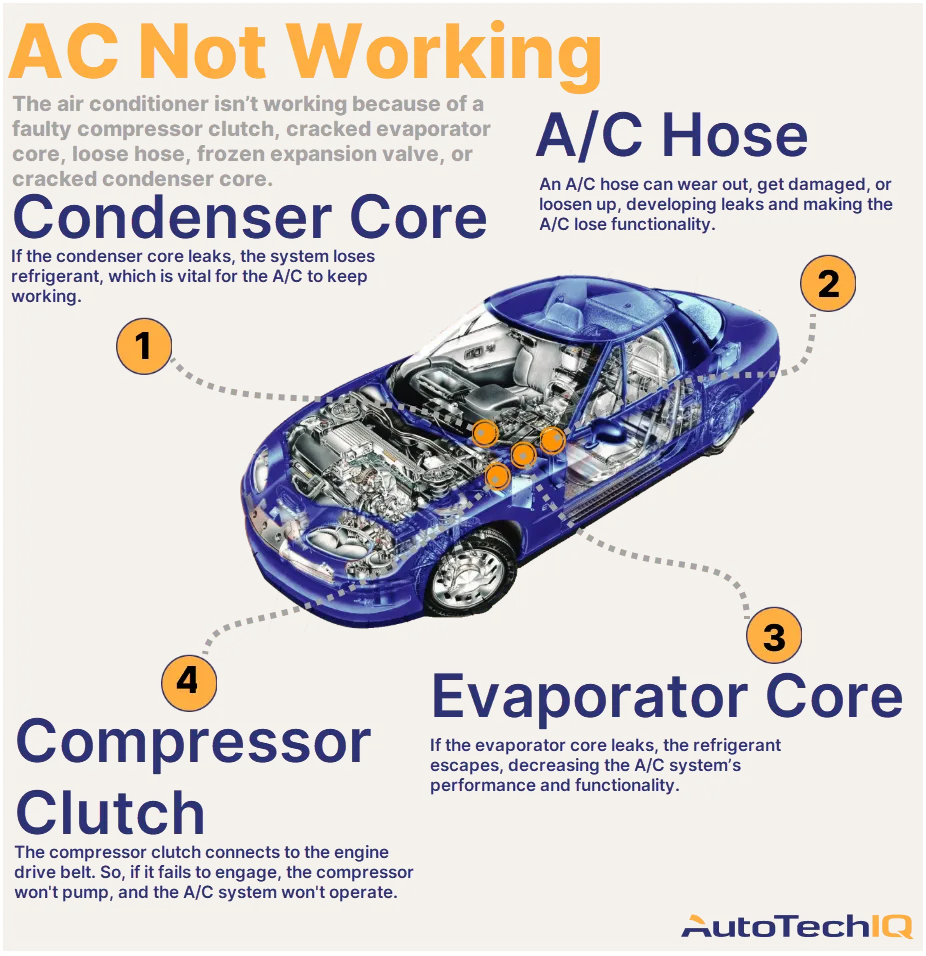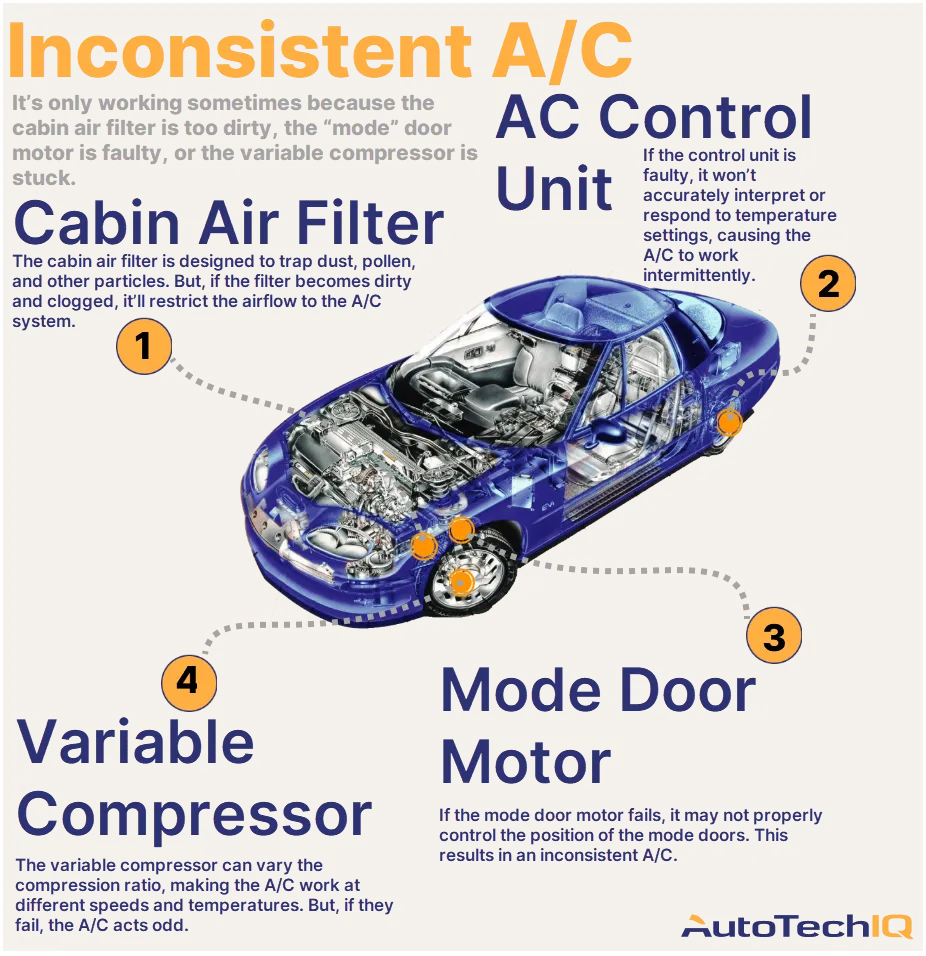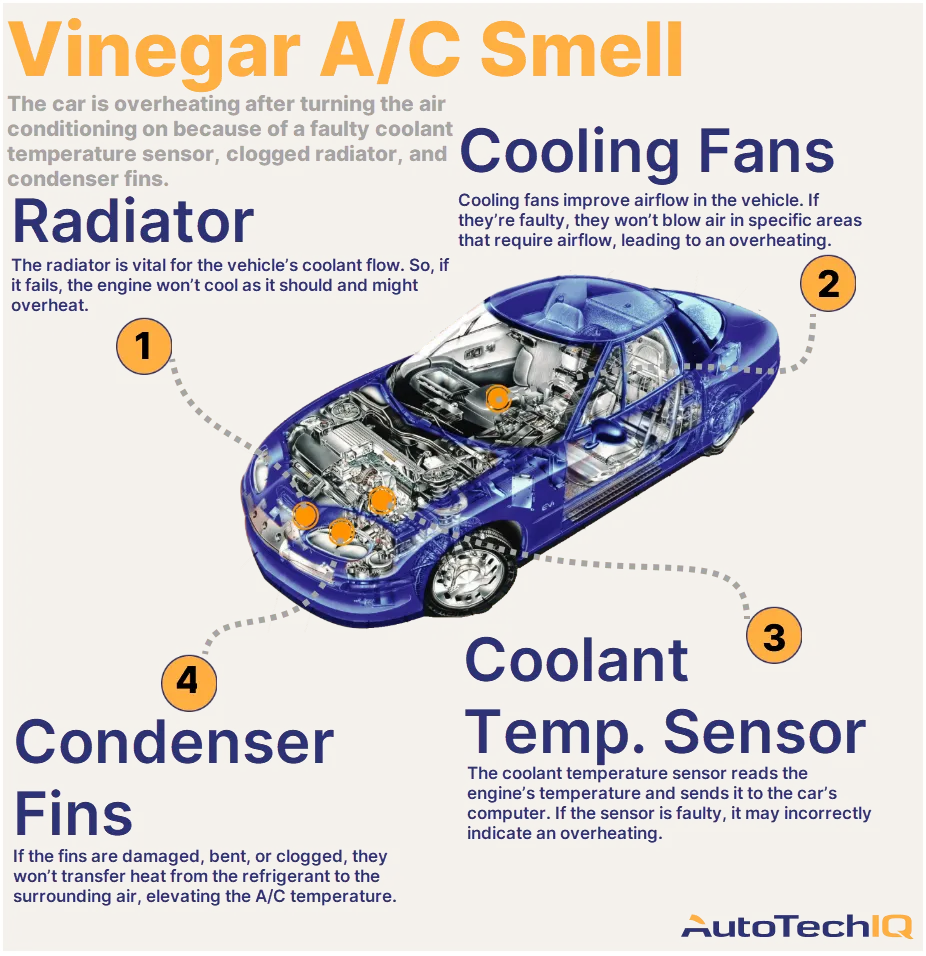Transparency example in a clogged radiator service
A cooling system inspection is the most transparent process to understand why your vehicle’s radiator is faulty. This is because many components surrounding the radiator, cooling hoses, and AC compressor can have a say in the issue, indicating the real culprits that caused it all.
Let’s read an example of how this kind of inspection helps to service a clogged radiator.
A customer dropped off their vehicle complaining about the temperature gauge rising while using the air conditioner. They mentioned that the temperature gauge rose to the red zone while driving up steep hills, and the air conditioner stopped working; this was a common occurrence. However, the vehicle's temperature gauge returned to normal while going downhill, and the air conditioner worked again.
During the test drive, the technician didn't notice any issues related to the customer's concern. However, they did see that the check engine light was on. Then, during the vehicle health inspection, the technician observed that the coolant was cloudy, and small chunks of particulates were on the gas bottle's side.
After scanning for vehicle codes, the technician found a P0217 engine in an over-temperature condition. The customer authorized additional diagnostics, and the technician began warming up the engine in the service bay to get the temperature to rise.
The engine cooling fans were at 220°, but the temperature continued to climb to 228°. The technician tested the airflow across the condenser and radiator cores by holding a rag before the fan, revealing enough airflow to hold up the rag.
The technician used a thermal imaging scanner to verify if the temperature-sending unit was correct. They discovered the temperature was within one degree of the live data readout. The technician then used the scanner to check the radiator and found that the coolant flow was restricted in the bottom half of the radiator, indicating clogged radiator cores.
The technician recommends replacing the radiator and doing a cooling system flush to eliminate particles in the engine block and hoses.

In this case, the mechanic put the “Immediate Action” tag on the radiator and a coolant system flush.
